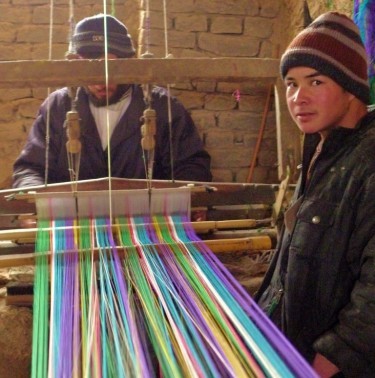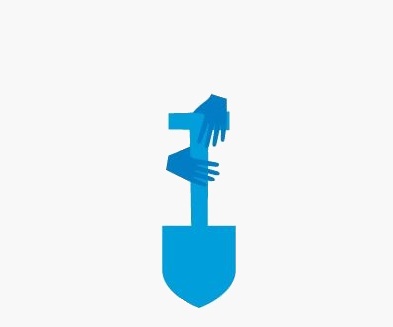
Refugees
Say the word ‘refugee’ and minds understandably turn to the European migrant crisis of 2015-’16. To be sure, the biggest migration since the Second World War has been nothing short of seismic. But back in Afghanistan – the second-biggest source of refugees into Europe, accounting for one-fifth of the total – another, sharper crisis unfolds.
Imagine if during the 2015-’16 migrant crisis some 50 million people, not 3 million, arrived on Europe’s shores, hungry and desperate for work. Now imagine if Europe was one of the poorest places on Earth, lacking even the most basic services required to keep up. That, proportionately, is the problem facing Afghanistan, currently facing the world’s largest returnee crisis, with some 2.5 million displaced people expected in the country from 2016 through 2018, according to the United Nations Office for the Coordination of Humanitarian Affairs (OCHA). Many are returning from neighbouring Iran and Pakistan, coerced by police abuse and threats of deportation. Others still have been internally displaced by a resurgent Taliban, now so emboldened that in 2017 the UN reclassified Afghanistan from a post-conflict country to one that’s in active conflict.
With so many causes, Afghanistan’s returnee crisis is a varied and complex problem. And in every individual case, jobs are part of the solution.
By creating jobs, we can improve life for Afghans who are thinking of fleeing to Europe and give them a reason to stay. At the same time, we can give internally displaced persons and returnees – many of whom have not been ‘home’ in decades, if at all – hope for the future, and a stake in productive Afghan life. Throughout 2018, we’ll be working with Deutsche Gesellschaft für Internationale Zusammenarbeit (GIZ), the German government’s development agency, to do exactly that. To find out more about how you can help, please, get in touch.
By the numbers
20% of refugees arriving in Europe by sea are Afghan
Only 10% of Afghans are in regular, waged employment
The average working Afghan earns US $16 a month
Up to 44% of the families we work with are sometimes forced to skip meals
Moving forward
Creating a job in the developing world costs a fraction of what it does to resettle a refugee in Europe. In Afghanistan, a sustainable, life-changing job costs Hand in Hand £300 to create. In Germany, feeding, housing and providing language classes to a single refugee costs £8,800 per year.
Hand in Hand Afghanistan has helped create 39,000 businesses and 44,000 jobs, transforming the lives of some 280,000 people – most of them children. And we’re only getting started. In light of the ongoing refugee crisis, we are committed to expanding our operations in Afghanistan, and recently joined with GIZ, the German government’s development agency, to help more than 4,000 returnees and IDPs work their way towards a prosperous, sustainable future in the country’s growing poultry value chain.
While Hand in Hand’s principal motive is to alleviate poverty, jobs also improve security and stability in the regions where we work. This is particularly true in areas that have recently suffered some form of violence. Studies suggest persistent unemployment makes individuals significantly more susceptible to rebel recruitment, as they perceive there to be no non-violent means of earning a living. In a global survey conducted by the World Bank in 2011, 39.5 percent of the members of rebel groups that were interviewed claimed unemployment and idleness were their principal motivations for joining.
By the numbers
World Bank World Development Report, 2011
39.5% of the members of rebel groups interviewed claimed unemployment and idleness were their principle motivation for joining
World Bank World Development Report, 2011
70% of Afghans think unemployment is a major factor driving the current conflict
African Development Bank Group: Youth Unemployment and Political Instability in Selected Developing Countries
When 15- to 24-year-olds make up more than 35% of the adult population, the risk of armed conflict is 150% higher than in countries with older populations
DRAFT Afghanistan National Youth Policy, 2011
In Afghanistan, 15- to 24-year-olds account for 40% of the total population
The Challenge
The greatest security related challenge in the regions where we work is that posed by youth unemployment. Even in countries experiencing economic growth, the number of youth entering the labour force is far greater than the number of new job opportunities being created each year. A 2013 report by the African Development Bank found that developing countries with large numbers of unemployed young people are considerably more likely to suffer some form of civil violence than those with lower levels of youth unemployment. A lack of jobs may leave young people feeling as if they have no choice but to join a rebellion as a means of generating an income. Conversely, those that are able to find employment become more invested in political stability and face a greater opportunity cost from joining a rebellion.
Of all the countries where Hand in Hand works, Afghanistan is the most beset by conflict. Beset by political instability and vast tracts of mountainous terrain, the country is incredibly difficult to police, providing a fertile ground for rebel groups to recruit young people. In a recent survey, 7 percent of Afghans said a lack of jobs was the principal reason they may support the goals of rebel groups in their region. Meanwhile, in another survey, 70 percent said unemployment and poverty were major factors driving the current conflict.
Youth unemployment in Afghanistan
In Afghanistan, 15- to 24-year-olds constitute 40 percent of the total population, increasing the risk of armed conflict in the country by 150 percent in comparison to countries with flatter age structures. Through our programme in Afghanistan, Hand in Hand is able to help tackle the issue of unemployment, thereby reducing the appeal of joining a rebel group and helping to facilitate a more politically stable environment.
Today
The threat of rising unemployment was heightened by the withdrawal of foreign troops at the end of 2014. Not only did their withdrawal reduce the security assurances in the region, it also resulted in a significant loss of jobs as those working for foreign security and civilian organisations, as well as Provincial Reconstruction Teams (PRT), were laid off. Estimates of the number of jobs at risk ranged from 50,000 to 360,000 when all those employed by service providers and other contractors were taken into account.
Afghanistan’s insecurity, mountainous terrain and political instability make it the most challenging location in which we work, and, as a result, the one that needs our commitment the most. So far, we’ve trained 46,000 Self-Help Group members and created 44,000 jobs in the country. And we’re just getting started.
What's New
How we work
Group savings and skills training aren’t rare. Nor, for that matter, is microfinance. But where other organizations focus on or two of these elements, Hand in Hand combines all three – then adds a fourth by connecting entrepreneurs to larger markets.


